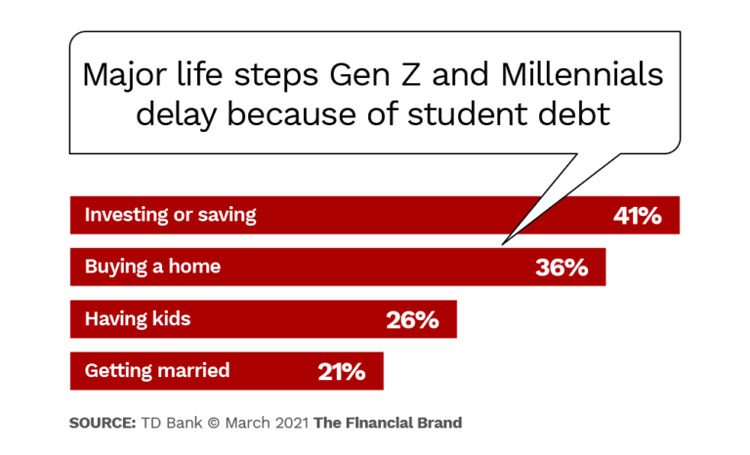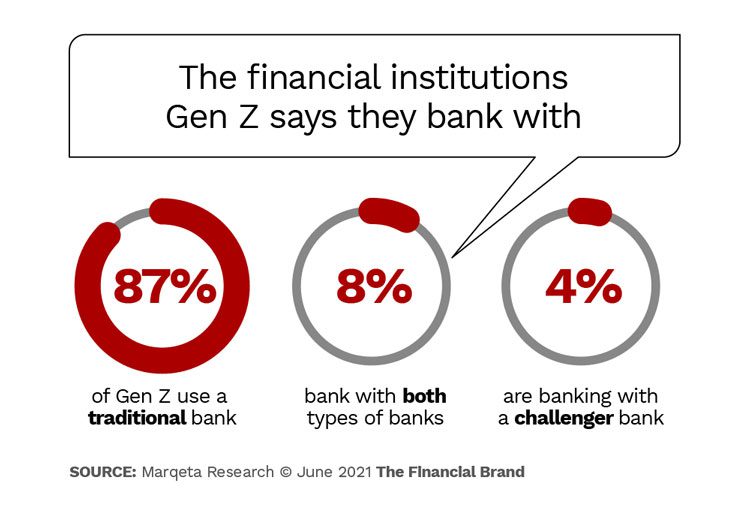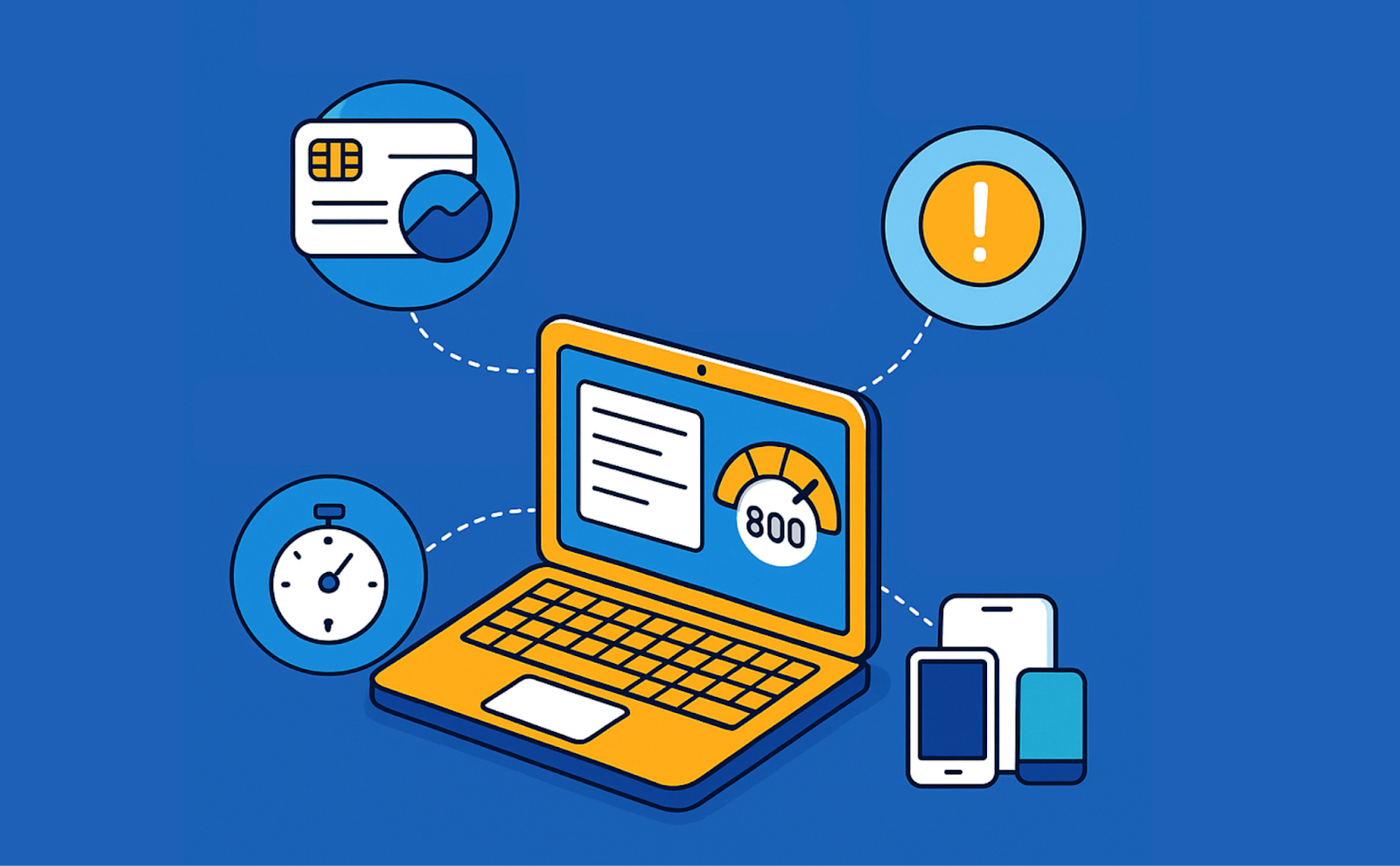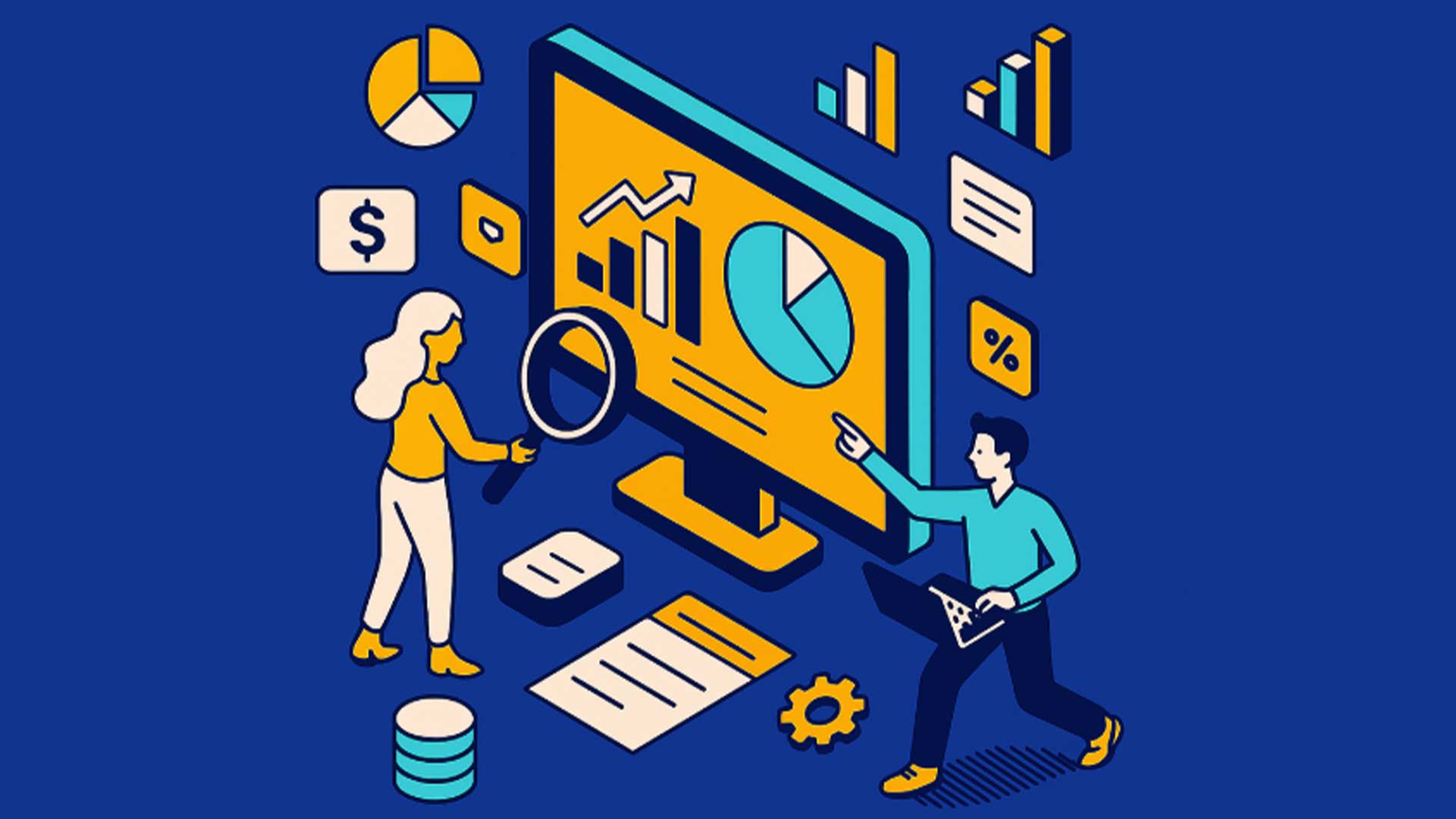How financial institutions can help individuals recover from student debt with financial wellness tools
Over the past decade, student debt has accelerated by 144%, affecting nearly 46 million Americans. In a recent report published by The Bipartisan Policy Center, a DC-based think tank, they explored the four primary causes of the student loan crisis:
- Lack of state funding for higher education – tax cuts and higher tuition
- Federal loan options for students
- Parent PLUS loans and Grad PLUS loans allow parents or students to take on debt without having the ability to repay the loans
- For-profit institutions receive federal bailout even if the student can no longer afford it, placing the burden on the taxpayers
Outstanding student loan debt is valued at $1.7 trillion, and is not limited to recent graduates. In an article published by Forbes, they broke down the borrowers by age demographics:
- < Age 24: $115.5 billion (7.8 million borrowers)
- 25 – 34: $500.5 billion (14.8 million borrowers)
- 35 – 49: $601.7 billion (14.2 million borrowers)
- 50 – 61: $262.2 billion (6.2 million borrowers)
- > 62: $86.8 billion (2.3 million borrowers)
As future business owners, leaders, and members of society – banks and credit unions need to support these individuals with the right tools to alleviate their financial burden. Without guidance and true financial education, people with student debt will not be able to secure a successful financial future for themselves and their families.
How does student debt impact an individual’s future?
While conversations of canceling student debt have circulated the nation’s political stage, the reality is that the people who took out the loans still incur the heavy burden of paying back their debt. According to The Bipartisan Policy Center’s report, “both borrowers and taxpayers are facing bleak economic futures should the student-loan industry continue to hand out loans that borrowers cannot afford to pay back.”
Student loan expert, Mark Kantrowitz, advised the best way for students to overcome student debt is to avoid overborrowing in the first place. To accomplish this, students should limit their total debt to less than their starting salary in the first year of their job out of college, allowing them to pay off their loans in less than ten years. Without setting these limitations, individuals will face lengthy repayment periods and high-interest rates, negatively impacting their future.
Most individuals lack a foundation for financial success. In fact, “less than 17% of students were required to take at least one semester of personal finance in high school.” While for some financial literacy can feel like common sense, only 34% of Americans can answer four of five basic financial literacy questions.

With proper financial education, students are less likely to accumulate credit card debt and are made aware of resources that will help them in the future, like scholarships, grants, and other resources they can apply to and lessen the need for student loans while attending college. Historically, banks have not wanted to get involved with student loans because, “young students have limited credit history, loan amounts can be substantial and the risk of default is real” (The Financial Brand, 2021). However, by leveraging education tools to increase financial literacy, users can experience greater financial health.
Younger generations care about their future and want to plan. Ultimately, future-thinking individuals may delay important life milestones if they feel weighed down by student debt. These generations want to be able to own a home and build a family. However, to achieve these goals, they will need to master financial literacy, a time where they may turn to their financial institution (FI) for support.
Thinking About Gen Z & Banking
 FIs should pay close attention to the banking needs of Gen Z (individuals born between 1997 and 2012). Gen Z wants to turn to traditional FIs for their services, rather than working with a neobank or fintech.
FIs should pay close attention to the banking needs of Gen Z (individuals born between 1997 and 2012). Gen Z wants to turn to traditional FIs for their services, rather than working with a neobank or fintech.
Gen Z has, “an estimated purchasing power of $44 billion … Millennials already make up the largest portion of the U.S. workforce, at 35 percent. When Gen Z is included, two of every three labor force participants in the U.S. is a young adult.”
As an emerging generation of adults, Gen Z does not seem to have their financial needs addressed. FIs found that in February of 2021, 51% of Gen Z did not own a credit card. This can be attributed to the availability of alternative payment methods, rejected credit card applications, and poor creditworthiness. This can be showcased by the rising popularity of Buy Now Pay Later (BNPL) methods among consumers; 75% of BNPL users are Gen Z and Millennials. While BNPL requires a card to be present for the transaction, that could easily be paid for by a debit card. Because of this, Gen Z and Millennials are not building their credit history.
How can financial institutions improve the student debt crisis?
FIs can help reduce the burden of student debt through education and accessible financial services. Community FIs are cornerstones of their local economies with a stronger tie to individual consumers than megabanks and digital banks. “The physical branch remains uniquely positioned to advance financial literacy, foster community engagement and philanthropy, and support the formation and maintenance of local small businesses,” (The Financial Brand, 2020).
However as the rate of branch closures accelerates, doubling every three years – FIs need greater outreach to serve their customers or members. Without physical branches in the community, consumers must have access to transportation to visit an FI or turn to digital banking vendors. Additionally, traditional branch hours are not convenient for individuals who work long hours during the standard “business” day. As individuals actively work to pay off their student debt, consumers cannot afford to take time off to manage their finances. Consumers need convenience, they may not have time to navigate an FI’s full website or may become frustrated if they experience friction. By removing barriers to financial education, banks can improve accessibility through digital banking solutions.
On the Alkami Platform, FIs can leverage dynamic packaging assignments for new users. This enables FIs to control the user journey through permissions and allowances, ensuring the right types of activities are occurring within their account. Now, users can aggregate internal and external bank accounts and learn from their spending activity with visualizations of transactions.
With data analytics and auto-categorization of transaction data, FIs can provide the user personalized messaging and insights about bills and upcoming expenditure predictions. FIs can support savings goals and nudge users to help grow their money; giving FIs another way to establish trust and brand loyalty. By leveraging a partner like SavvyMoney, users can view credit insights, receive actionable advice on how to improve their credit score, and shop relevant card and loan offers based on their credit profile.
By providing one centralized location for all financial tools – transaction categorization, insights, online banking, predictive spending, automated savings, account aggregation, cryptocurrency, and credit score, users will experience convenience and feel confident in their ability to manage their finances independently. As the user evolves and grows, so should their online banking provider.
While FIs can not solve all of the problems individuals face with student debt, they can support users throughout their financial journey with imperative financial wellness tools and education. By initiating a consultant-type of relationship, FIs can provide users with the advice they need to better their financial health and enable users to achieve true financial freedom. These generations are the future entrepreneurs and community leaders of our nation, and their success will ultimately lead to the success of local economies from coast to coast. By investing in the future, FIs can ensure a prosperous economic outcome for their communities.
Interested in learning more about financial wellness?









